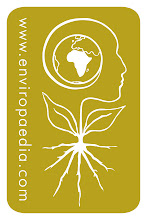Source: Copyright 2009, Guardian
Date: February 18, 2009
Byline: Ian MacKinnon
Original URL
A year-long freeze on the use of peat land for palm oil plantations was quietly lifted by Indonesia, fuelling fears of a rise in greenhouse gas emissions.
Greenpeace estimates that Indonesia's peat land locks in 37.8 billion tonnes of carbon dioxide - a significant global store of carbon. As this peat land is cleared and drained to grow palm oil, millions of tonnes of CO2 is released into the atmosphere.
A report by the World Bank abd Britain's department for International Development said defporestation, forest fires and peat land degradation were responsible for up to 84% of Indonesia's carbon emissions.
What Indonesia is certainly taking into account is that it is the world's largest producer of palm oil with 7.1m hectares of estates planted, generating an exports revenue of £7.64bn in 2008.
* * *
See more images of Palm Oil Plantations in Sumatra on the Protect Forests - Save our Climate blog.Further Information:
Interesting developments in Sustainable Palm Oil Production





No comments:
Post a Comment